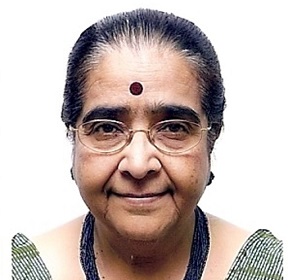Keynote Forum

Title: Do underprivileged children have more risk factors for Cardiac operative mortality? - A Retrospective Analysis
Abstract:
This is a retrospective analysis of 5653 underprivileged children from 1988 to 2019. In the general population risk factors such as surgeries under RACH1 categories, myocardial protection,Post-operative RV function, Postoperative bleeding, Hb > than 14 Gms % and 40% PCV , contributed to mortality. Arrhythmia, Complete Heart Block , Bleeding, Long CPB Time > 2 1/2 hrs , Long ACC Time> 1 1/2 hrs , Long Mechanical Ventilation > 48 hrs , Inotropes duration >96 hrs, Electrolyte Imbalance, Metabolic Imbalance, and Postoperative respiratory infection contributed to mortality in the early era but only morbidity later. In the underprivileged, underweight malnutrition, anaemia, and hypoproteinaemia were risk factors that contributed to cardiac operative mortality in the early era. 3 phases in the history in 3 different centres showed that it was possible to control operative mortality (gross mortality decreased from 5% to 2.73%). Morbidity contributing to stay in the hospital for more than 7 days and mechanical ventilation duration of more than 48 hrs has become less than 1%. Underweight malnutrition became a problem in the earlier surgical era when weaning from mechanical ventilation. Ryle’s tube and parenteral nutrition were the solutions. Malnutrition was in 87%, anaemia in 70 % and Hypo proteinemia in 60% of underprivileged children. Maintaining a Haemoglobin percentage of more than 7.5 Gms % and PCV above 22% during cardiopulmonary bypass reduced mortality due to multi organ failure. Contracted haemic prime, reduced tube lengths and neonatal, infant and paediatric membrane oxygenators and hemofilters were mainly responsible for the gross mortality reduction to 3.92%. Addition of Albumin to the prime and postoperatively controlled hypoproteinemia. Collaboration under IQIC (International Quality Improvement Collaborative) for congenital heart diseases under Children Hospital, Boston helped in reducing mortality to 2.73%. Postoperative respiratory infection when treated meticulously preoperatively, remained at 2.73 %. Study is on to reduce it to less than 1%. During the last 6 yrs, there have been no mortality or morbidity due to malnutrition, anaemia or hypo proteinemia. Follow up of these children has revealed that 90% of them progressively increased their weight and height from the first month postsurgical. Those who lived in the earlier era and later era also presented the same. Since all of them returned to their homes in the same socio economic environment, this showed correction or repair of their cardiac defects per se helped them to gain weight and height. 20% of them reached the standard height and weight as per age according to Indian standards.
Biography:
47 years of involvement in Cardiovascular and Thoracic Surgery in various capacities as Assistant Professor,Professor and Head of the Department ,Government General Hospital and Institute of Child Health and Hospital for Children, Madras Medical College. Performed around 11, 000 surgeries with 7000 surgeries performed on newborns, infants and children less than 12 years. Involved in various research activities and publication of papers in National and International Journals. Served as examiner for MCh (CTS) in different Universities. At present involved in a project Solution for Cardiac Afflicted Needy (SOCAN) which involves Free Cardiac Surgery & follow-up for the under-privileged.

Ern Remsey-Semmelweis MD
United KingdomTitle: The Role of Impact Force of Elliptic Blood Vortex Rings Collision in Acute Aortic Dissections
Abstract:
Objective : Acute aortic dissections (AAD) or wall ruptures on the entire aortic arch region even at aneurysmas are life threatening diseases. Till today all Acute Aortic Dissections Classifications are -Symptom Based Systems. By the results of our academic research team we developed the first „Cause Based Classification” based on the kinetics of the blood vortex-rings collisions. We cleared it, based on mathemathic, the mechnism itself with huge benefit on the daily vascular surgical practice.
The Results: Our investigation shows that the kinetic energy force is the main factor for initiating the acute aortic dissection. Its generated only from the collision of the equal energy and symmetrical interference of physiological and „turned over” pathological ellyptical blood flow vortex rings. Inside the spiral aortic arch flow, blood as a Non-Newtonian, non symmetric fluid can turn over even 180 degree by the elevation of the „Momentum of Insertia” and collide to the entering blood mass from the LV. It is this high kinetic energy force - as resonance or vibration - at the opening moment of the vorticis even in wall haematomas as one relative silent form from the 3 different AAD-s without an entry or re-entry. Same as the side effect of kidney stone Shock Wave Lithotripsy either shows, that in both effects the initiator is a High Energy Resonance - A Shock Wave -, wich can different size of ruptures in the intima or in the cappilaries, sometimes the entire vessel wall. It is NOT a Continuous Wall-, or Shear Force elevation as the classical current medical theory says!
Description: It means that it comes from two blood vortex rings – Blood Mass - Kinetic Energy Interaction -- with a relative high scale negative vector at the initial moment. Its rise in the vessel wall layers, mostly only the intima, but in the two other AAD forms either. It follows the blood mass entry – as an „Action-Reaction” force, dissecting the layers of the aortic wall or it ruptures the entire wall. The result depends on the local resistance, physiological condition of the aortic wall. /In the operative clinical Typ A,even B aortic dissection practice the wall of the aorta is in 80-90% intact!!!/ It’s because, the wall of the mammalian vascular system has a „Given Nature” ability to tolerate extreme high, even 10 times higher than normal blood pressure from inside out only, - several G forces-,but can not tolerate the similar high scale forces affecting on it with opposite vector!!!
Conclusion: A simplified Gradient by a mathematical formula : - Vortex Collision Caused Negativ Kinetic Force /Vector towards the aortic wall/ devided by Actual Aortic Arch Wall Resistance allow us to estimate the correct prognosis here: -A real „Cause Based Classification”, a mathematical Ratio of Risk for an intimal injury only, or for a fatal Acute Typ A, B, AAD or an entire Wall Rupture.
Biography:
Erno Remsey-Semmelweis is a Cardio-thoracic & Vascular & General Surgeon at The University Clinics of Giessen & Marburg Gmbh, Head of Interventional Clinical Aorta & Aortic Valve Program and Director of Experimental Translational Hybrid-Or Laboratory UniversityClinics of Giessen & Marburg Gmbh. He was appointed in Aortic-Vascular Surgery Program-Team at Royal Brompton and HarefieldHospitals NHS Foundation Trust, London, UK.Erno Remsey-Semmelweis is a Cardio-thoracic & Vascular & General Surgeon at The University Clinics of Giessen & Marburg Gmbh,Head of Interventional Clinical Aorta & Aortic Valve Program and Director of Experimental Translational Hybrid-Or Laboratory UniversityClinics of Giessen & Marburg Gmbh. He was appointed in Aortic-Vascular Surgery Program-Team at Royal Brompton and Harefield Hospitals NHS Foundation Trust, London, UK.
Speakers

Dr Fabiana Tortora
University of Campania “Luigi Vanvitelli ItalyTitle: Hydroxytyrosol decreases phosphatidylserine exposure and inhibits suicidal death induced by lysophosphatidic acid in human erythrocytes
Abstract:
Background/Aims:Lysophosphatidic acid (LPA) is a phospholipid signal molecule that regulates many cellular processes both physiological and pathological [1]. Moreover, its high plasma concentrations are toxic for several cellular types, including erythrocytes (RBC), as it acts as a pro- thrombotic and pro-atherogenic agent [2]. It is therefore essential to explore the potential protective role of nutrition in protecting cells from the possible toxic effects of high plasma concentrations of LPA by testing bioactive nutrients. In particular, our focus was on hydroxytyrosol (HT), a phenolic antioxidant occurring naturally in virgin olive oil [3, 4], investigating its possible protective effect in preventing LPA-induced programmed cell death (eryptosis) in human RBC [5].
Methods: Intact RBC were incubated in the presence of 2.5 µM LPA and increasing concentrations of HT. Phosphatidylserine (PS) exposure with cell shrinkage, influx of extracellular calcium (Ca2+), ATP and glutathione levels were measured by FACS analysis. In addition, confocal laser scanning microscopy was used to determine RBC morphological alterations, as well as microvesicle formation. Results: Our study confirms that LPA-induced eryptosis is characterized by PS exposure at the cell surface, with cell shrinkage and ATP and glutathione depletion; (Ca2+) influx is also a key event that triggers eryptosis. Here we report for the first time that cell co-incubation with LPA and in quantities as low as 0.1 µM HT causes a significant decrease in PS-exposing RBC, along with significant protection from the decrease in cell volume. Moreover, treatment of RBC with HT countered the influx of extracellular Ca2+ and has completely restored ATP and glutathione content at 1 µM. Finally, under the same experimental conditions, HT exerts a protective effect on RBC morphological changes and microvescicle release, completely restoring the typical biconcave shape at 1 µM.
Conclusions. Taken together, the findings reported in this paper point to a novel biological effect of HT in preventing programmed suicidal death in anucleated cells and indicate that prevention from LPA toxic effects may represent an additional mechanism responsible for the claimed health-promoting effect of this dietary phenol, particularly related to cardiovascular diseases.
Biography:
Fabiana Tortora is a PhD student at the University of Campania "Luigi Vanvitelli" of Naples, who will be awarded the PhD title in "Biochemical and Biotechnological Sciences" this December 2019. During the 3 years of her PhD she repeatedly exposed in individual way with seminars addressed to the College and to other teachers the results on the progress of the thesis work. Furthermore, these three years of doctoral studies have been enriched, also by research activities abroad, by publications and participations in conferences. In particular, during the second year for a period of 3 months, part of the research activity was carried out in Germany at the “Medizinische Fakultät, Physiologisches Institut I, Wilhelmstrasse 56 D-72076 Tübingen”, under the guidance of Prof. Dr. med. Dr. h.c. Florian Lang. The work focused on a greater understanding of eriptosis, a programmed death process that red blood cells encounter, with the aim of improving the side effects of anemia caused by chemotherapy drugs in cancer patients. Moreover, Fabiana holds a Second Level Degree in Biology specializing in Nutrition with 110 cum laude and a First Level Degree in Biological Science specializing in Pathophysiology at the Federico II University of Naples.

DrEirini Marouli
Queen Mary University UKTitle: Mendelian randomization analyses reveal a causal effect of Thyroid function on Cardiovascular risk factors and diseases
Abstract:
Despite progress in prevention and treatment over the past two decades, cardiovascular disorders remain a leading cause of mortality worldwide. Several observational studies suggest that even minor variation in thyroid function is associated with atherosclerotic cardiovascular disease, type 2 diabetes (T2D), hypertension, dyslipidaemia, and obesity. This raises the question as to whether common forms of mild thyroid dysfunction need treatment to prevent such complications.
Through two-sample Mendelian randomization approaches, we investigated whether the relationship between thyroid function (interrogated through variation in reference range TSH and FT4, subclinical hypo- and hyperthyroidism, Hashimoto’s Disease (HD) and Graves’ disease) and cardiometabolic risk is causal, and possible mediation pathways underlying it.
Using both published GWAS results and data from the UK Biobank, we show that one standard deviation (SD) increase in TSH levels causes a 5% decrease in the risk of stroke (OR=0.95, 95% CI= 0.91 to 0.99).
Multivariable MR analyses indicated that this effect is mediated through atrial fibrillation (AF). While normal range thyroid function is not associated with Coronary Artery Disease (CAD), HD was associated with a 7% increased risk of CAD (OR=1.07, 95% CI= 1.01 to 1.13).
The effect of HD on CAD risk appears to be mediated via body mass index (BMI).
Looking at cardiovascular risk factors, a one SD increase in TSH levels was causally associated with: an increase of 0.05 SD units in total cholesterol serum levels (β=0.05, 95% CI=0.02 to 0.08), a 0.03 SD unit increase in low- density lipoprotein (β=0.03, 95% CI= 0.003 to 0.02), and a 0.31 mmHg decrease in pulse pressure (PP) (β=-0.31, 95% CI= -0.54 to - 0.08). In line with these findings, subclinical hyperthyroidism is causally associated with increased PP (β=0.15, 95% CI= 0.05 to 0.25). There is no evidence for a causal association between normal range FT4 levels and the tested outcomes.
These results establish that minor variation in normal range thyroid function can be a novel modifiable risk factor for stroke through its effect on AF. Furthermore, variation in thyroid function can affect cardiovascular risk via its effects on cholesterol levels and blood pressure. These findings pave the way to consider future adjustment of thyroid function in managing patients’ risk of stroke
Biography:
Dr Marouli’s research interests lie at the interface of genetics, bioinformatics and statistics, in order to achieve a better understanding of human biology and disease prediction with the use of “Big Data”. Her work focuses on using human genetics to identify genes that influence common diseases and quantitative traits, including height and adiposity. Dr Marouli implements novel computational methods, including machine learning, to gain biological insights from human genetic and phenotypic data. She has a leading role in the large international consortium (GIANT) that has discovered almost all of the genetic variants that are known to influence human height and obesity related traits. Dr Marouli has also leading work and contributions in global consortia (GLGC, CHARGE CARDIoGRAMplusC4D) for complex traits and diseases.In addition to gene discovery efforts, Dr Marouli is also interested in genetic-epigenetic approaches to complex phenotypes. Dr Marouli is focusing on the genetics of thyroid disease. Her recent work integrates the use of genetic data and a battery of state of the art approaches, for causal inference and mendelian randomisation, to elucidate the genetic interplay between risk factors and disease.

Title: Utility of fractional flow reserve in moderate in-stent re-stenosis and jailed side branches and comparison of fractional flow reserve with SPECT- MPI in native coronary artery stenosis
Abstract:
Background: Functional flow reserve (FFR) is used to determine functional significance of coronary artery stenosis. FFR demonstrated discrepancy between angiographic and functional significance of jailed side branches (JSB) as well as moderate In-stent restenosis (ISR), with only minority of such lesions having functional significance. An attempt was made to study utility of FFR and comparison of FFR with single photon emission computed tomography myocardial perfusion imaging (SPECT-MPI) in native coronary artery stenoses.
Methods: A total 101 lesions in 79 patients with stable ischemic coronary artery disease were subjected to FFR and SPECT-MPI including native as well as ISR and JSB. Relation between FFR and perfusion imaging was analyzed quantitatively. Sensitivity, specificity, positive predictive value, negative predictive values were used for diagnostic accuracy.
Results: FFR was ≤0.75 in majority of the lesions having > 70 % stenosis. Most of the lesions having reversible perfusion defect had FFR ≤ 0.80. There was a significant negative correlation between summed difference score (SPECT-MPI) with FFR value. As FFR value decreased summed difference score increased. Sensitivity and specificity did not differ much when FFR cut off was taken as 0.75 or 0.80.
Conclusion: There was a significant negative correlation between FFR and sum difference score (SPECT-MPI). Sensitivity and specificity of SPECT-MPI did not differ much when FFR value cut off was taken as 0.75 or 0.80.
Biography:
Dr Ajit Jadhav is an interventional cardiologist by profession and works with Dr D Y Patil Medical College, Pune. He holds a DNB in Cardiology and MD in Internal Medicine. He gathers a total experience of 3 years in the field of Interventional cardiology. Dr. Ajit is passionate about working in preventive cardiology as well as in advanced imaging modalities in the field of Structural heart disease and Interventional Cardiology.
E-Poster

Mrs Xiangjun Fu
Zunyi Medical University, ChinaTitle: The association between the environmental endocrinedisruptors and Cardiovascular diseases: a systematic review and meta analysis
Abstract:
Background:Except for known cardiovascular risk factors, long-term exposure to environmental Endocrine disruptors (EEDs) has been proved to increase the risk of cardiovascular diseases (CVD), which are still controversial.
Objective:The aim of the study was to evaluate the relationship between CVD and EEDs which are most closely related to daily life .acomprehensively explore the associations between EEDs exposure and CVDfor the first time. Besides,.In addition, gender, age, body mass index (BMI), waist circumference (WC), total cholesterol (TC), high density lipoprotein (HDL), and low-density lipoprotein (LDL) were analyzed in subgroup for the first time.To explore the role of these specific variables in the impact of BPA on CVD risk.
Methods:The heterogeneity between different studies was qualitatively and quantitatively evaluated using Q test and I2 statistical magnitude, respectively in Stata12.0 software. Subgroup analysis was performed using chemical homologs, a previously unused grouping method, to extract data and perform meta-analysis to assess their exposure to CVD.
Results:Twenty-three literatures were enrolled with a total sample size of 40717. The results indicated that polychlorinated biphenyl(PCB)138, PCB153, and total PCB were the risk factors for CVD exposure (OR=1.26, 95%CI: 1.03-1.54; OR=1.17, 95%CI: 1.00-1.37; OR=1.50, 95%CI: 1.11-2.02). CVD risk had a statistical significance with organo-chlorine pesticide(OCPs) exposure (OR=1.17, 95%CI: 1.10-1.24), so was with phthalate (PAEs)and (OR=1.11, 95%CI: 1.05-1.11)Bisphenol A(BPA) (OR=1.25, 95%CI: 1.03-1.50). BPA exposure concentration had no correlations with sex, TC, or LDL, but had them with WC, HDL, age and BMI (SMA=0.16; 95%CI=0.08-0.23; SMD=-0.19; 95%CI:-0.27- -0.12; SMD=-0.78; 95%CI:-1.42- -0.14;SMD=0.08; 95%CI: 0.00-0.16).
Conclusions: EEDs exposure is a risk factor for CVD. Long-term exposure to EEDs can influence cardiovascular health in human, and the synergistic effect between homologs is significant, which may affect the outcome. In the investigations on the influencing factors of CVD exposed to BPA, the exposure concentration has no correlations with sex, TC or LDL, but has them with WC, HDL, age and BMI. The mechanism still needs to be to explored and demonstrated by many prospective cohort studies, in vitro/in vivo results, as well as indices affecting CVD.
Key Words: Environmental endocrine disruptor,Cardiovascular diseases Meta analysis,Systematic review
Biography:
Xiangjun Fu:Female, master, research direction is environmental toxicology.

